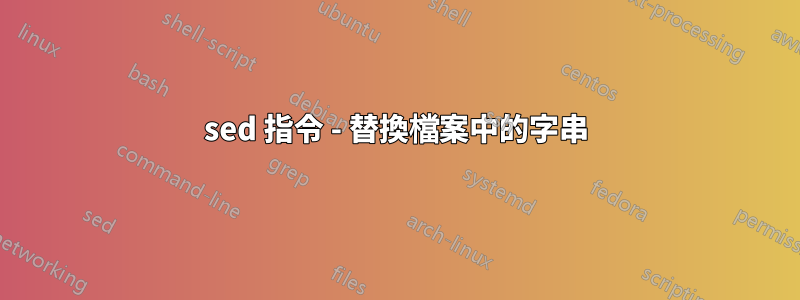
我想修改server.xml文件中的值:
<?xml version='1.0' encoding='utf-8'?>
<!--
Licensed to the Apache Software Foundation (ASF) under one or more
contributor license agreements. See the NOTICE file distributed with
this work for additional information regarding copyright ownership.
The ASF licenses this file to You under the Apache License, Version 2.0
(the "License"); you may not use this file except in compliance with
the License. You may obtain a copy of the License at
http://www.apache.org/licenses/LICENSE-2.0
Unless required by applicable law or agreed to in writing, software
distributed under the License is distributed on an "AS IS" BASIS,
WITHOUT WARRANTIES OR CONDITIONS OF ANY KIND, either express or implied.
See the License for the specific language governing permissions and
limitations under the License.
-->
<!-- Note: A "Server" is not itself a "Container", so you may not
define subcomponents such as "Valves" at this level.
Documentation at /docs/config/server.html
-->
<Server port="9001" shutdown="SHUTDOWN">
<Listener className="org.apache.catalina.startup.VersionLoggerListener" />
<!-- Security listener. Documentation at /docs/config/listeners.html
<Listener className="org.apache.catalina.security.SecurityListener" />
-->
<!--APR library loader. Documentation at /docs/apr.html -->
<!--
<Listener className="org.apache.catalina.core.AprLifecycleListener" SSLEngine="on" />
-->
<!-- Prevent memory leaks due to use of particular java/javax APIs-->
<Listener className="org.apache.catalina.core.JreMemoryLeakPreventionListener" />
<Listener className="org.apache.catalina.mbeans.GlobalResourcesLifecycleListener" />
<Listener className="org.apache.catalina.core.ThreadLocalLeakPreventionListener" />
<!-- Global JNDI resources
Documentation at /docs/jndi-resources-howto.html
-->
<GlobalNamingResources>
<!-- Editable user database that can also be used by
UserDatabaseRealm to authenticate users
-->
<Resource name="UserDatabase" auth="Container"
type="org.apache.catalina.UserDatabase"
description="User database that can be updated and saved"
factory="org.apache.catalina.users.MemoryUserDatabaseFactory"
pathname="conf/tomcat-users.xml" />
</GlobalNamingResources>
<!-- A "Service" is a collection of one or more "Connectors" that share
a single "Container" Note: A "Service" is not itself a "Container",
so you may not define subcomponents such as "Valves" at this level.
Documentation at /docs/config/service.html
-->
<Service name="Catalina">
<!--The connectors can use a shared executor, you can define one or more named thread pools-->
<!--
<Executor name="tomcatThreadPool" namePrefix="catalina-exec-"
maxThreads="150" minSpareThreads="4"/>
-->
<!-- A "Connector" represents an endpoint by which requests are received
and responses are returned. Documentation at :
Java HTTP Connector: /docs/config/http.html (blocking & non-blocking)
Java AJP Connector: /docs/config/ajp.html
APR (HTTP/AJP) Connector: /docs/apr.html
Define a non-SSL/TLS HTTP/1.1 Connector on port 8080
-->
<Connector port="8180" protocol="HTTP/1.1"
connectionTimeout="20000"
URIEncoding="UTF-8"
redirectPort="8443" />
<!-- A "Connector" using the shared thread pool-->
<!--
<Connector executor="tomcatThreadPool"
port="8181" protocol="HTTP/1.1"
connectionTimeout="20000"
redirectPort="8443" />
-->
<!-- Define a SSL/TLS HTTP/1.1 Connector on port 8443
This connector uses the NIO implementation that requires the JSSE
style configuration. When using the APR/native implementation, the
OpenSSL style configuration is required as described in the APR/native
documentation -->
<!--
<Connector port="8443" protocol="org.apache.coyote.http11.Http11NioProtocol"
maxThreads="150" SSLEnabled="true" scheme="https" secure="true"
clientAuth="false" sslProtocol="TLS" />
-->
<!-- Define an AJP 1.3 Connector on port 8009 -->
<Connector port="8010" protocol="AJP/1.3" redirectPort="8443" />
<!-- An Engine represents the entry point (within Catalina) that processes
every request. The Engine implementation for Tomcat stand alone
analyzes the HTTP headers included with the request, and passes them
on to the appropriate Host (virtual host).
Documentation at /docs/config/engine.html -->
<!-- You should set jvmRoute to support load-balancing via AJP ie :
<Engine name="Catalina" defaultHost="localhost" jvmRoute="jvm1">
-->
<Engine name="Catalina" defaultHost="localhost" jvmRoute="jvmB04905-2">
<!--For clustering, please take a look at documentation at:
/docs/cluster-howto.html (simple how to)
/docs/config/cluster.html (reference documentation) -->
<!--
<Cluster className="org.apache.catalina.ha.tcp.SimpleTcpCluster"/>
-->
<!-- Use the LockOutRealm to prevent attempts to guess user passwords
via a brute-force attack -->
<Realm className="org.apache.catalina.realm.LockOutRealm">
<!-- This Realm uses the UserDatabase configured in the global JNDI
resources under the key "UserDatabase". Any edits
that are performed against this UserDatabase are immediately
available for use by the Realm. -->
<Realm className="org.apache.catalina.realm.UserDatabaseRealm"
resourceName="UserDatabase"/>
</Realm>
<Host name="localhost" appBase="webapps"
unpackWARs="false" autoDeploy="false">
<!-- SingleSignOn valve, share authentication between web applications
Documentation at: /docs/config/valve.html -->
<!--
<Valve className="org.apache.catalina.authenticator.SingleSignOn" />
-->
<!-- Access log processes all example.
Documentation at: /docs/config/valve.html
Note: The pattern used is equivalent to using pattern="common" -->
<Valve className="org.apache.catalina.valves.AccessLogValve" directory="logs"
prefix="localhost_access_log" suffix=".txt"
pattern="%h %l %u %t "%r" %s %b" />
</Host>
</Engine>
</Service>
</Server>
我想jvmRoute=用另一個值替換該值
例子:
舊值:
<Engine name="Catalina" defaultHost="localhost" jvmRoute="jvmB04905-2">
新值:
<Engine name="Catalina" defaultHost="localhost" jvmRoute="VALUE10">
當我執行這個命令時:
sed -i '/^jvmRoute=/s/=.*/=VALUE10/' server.xml
我的文件沒有任何變化,為什麼?
答案1
您的sed命令不會更改任何內容,因為您的檔案不包含任何以字串 開頭的行jvmRoute。
XML 解析應該使用 XML 解析器來完成。
XMLStarlet 是一個很好的命令列解析器:
$ xml ed -u '//Engine/@jvmRoute' -v 'VALUE10' server.xml >server-new.xml
jvmRoute這會將所有節點的屬性值變更Engine為字串VALUE10,並將產生的 XML 儲存到server-new.xml.
Engine僅更改具有 的節點的值defaultHost="localhost":
xml ed -u '//Engine[@defaultHost="localhost"]/@jvmRoute' -v 'VALUE10' server.xml >server-new.xml
XMLStarlet 可從http://xmlstar.sourceforge.net/,但首先檢查你的套件管理器。有時會呼叫 XMLStarlet 可執行檔xmlstarlet而非xml.
答案2
和sed:
sed -E 's/(jvmRoute=)([a-zA-Z0-9"-])+/\1"VALUE10"/g'
由於您沒有指定原始jvmRoute值是什麼,我為上面的範例編寫了正規表示式,但您可以根據您的需求進行自訂。
若要直接在文件中替換,請使用:
sed -i -E 's/(jvmRoute=)([a-zA-Z0-9"-])+/\1"VALUE10"/g' server.xml
但使用 xml 解析器可能是最好的方法。
答案3
sed 's/patternFrom/patternTo/' file.txt
• “s/” 表示取代以下內容:現在必須透過鍵入單行命令將此替換套用到我們的檔案:
• sed 只能將指令套用到一組選取的行。這些行透過文件內的漸進編號進行標識,從第 1 行開始。
例如:
sed '2s/patternFrom/patternTo' file.txt
• 僅在第二行執行替換
或者
sed '2,$s/patternFrom/patternTo' file.txt
• 執行從第2 行到最後一行的替換,由特殊符號「$」標識。
更
• sed 包含一個內部緩衝區,稱為保持空間。該緩衝區可以透過某些命令激活,例如“g”。 'g' 命令使保留空間替換當前輸入行,以便可以在輸入行上重複匹配
在您的情況下,請嘗試將所有行上的所有出現情況與:
sed 's/patternFrom/patternTo/g' file.txt
我認為不起作用的是模式
確保正規表示式有效,嘗試使用
sed 's/jvmRoute="[a-zA-Z0-9-\.]*["]/jvmRoute="VALUE10"/g
答案4
您沒有任何以“jvmRoute”開頭的行。 (^表示行首,只需省略即可更改文件中的兩次出現。)


